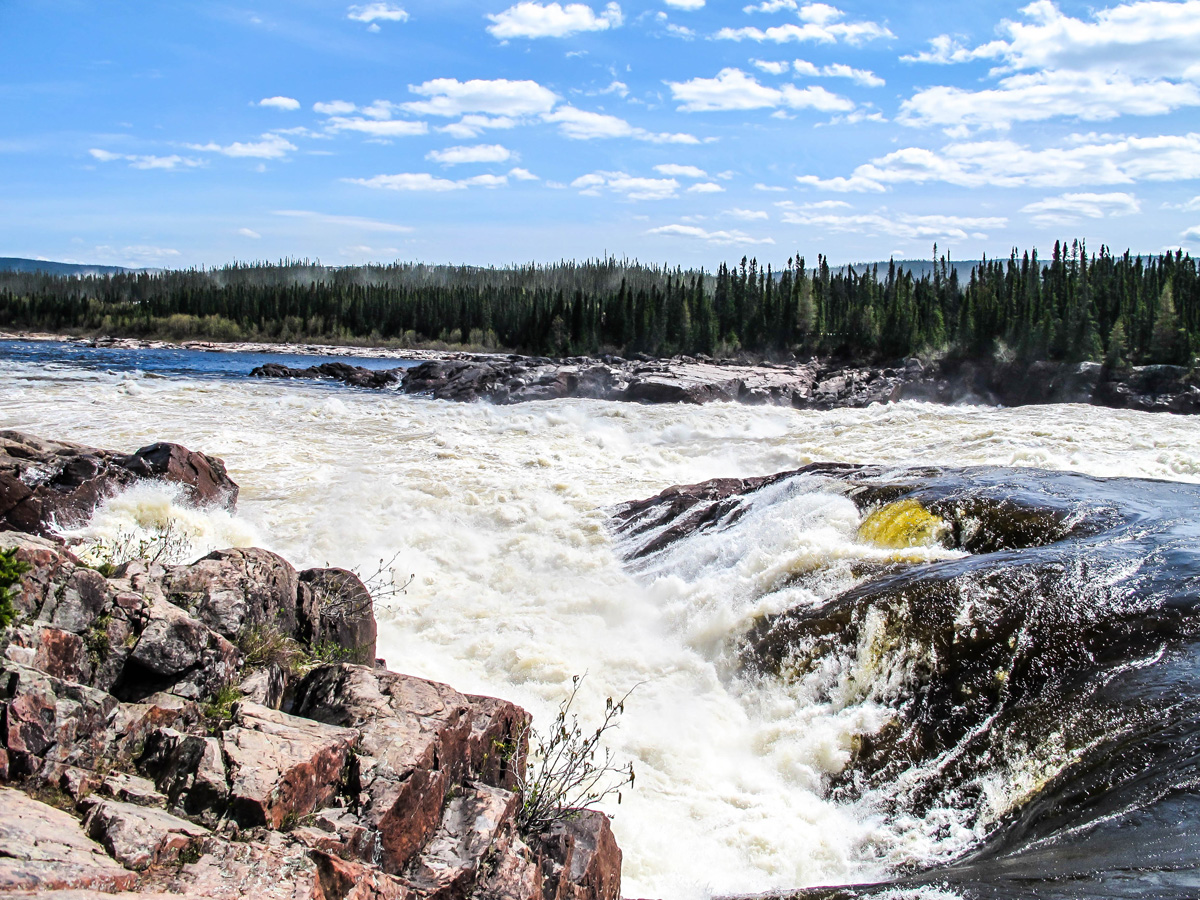- Methylmercury, a dangerous neurotoxin, can build up in the bodies of marine mammals and fish, threatening the humans who eat them.
- New research suggests dams and reservoirs in sub-Arctic regions may release methylmercury downstream.
- Native residents who depend on hunting and fishing are especially at risk.
Native people have lived along what is now Canada’s rugged north Atlantic coastline for thousands of years, fishing and hunting marine mammals for sustenance. New research in the Proceedings of the National Academy of Sciences shows that dams to produce hydroelectric power may imperil that way of life by magnifying a powerful neurotoxin in the ecosystem: methylmercury.
“The Inuit population in the area already relies heavily on fish,” lead author Amina Schartup of Harvard University told Mongabay. The threat of more methylmercury in their daily diet, she said, is a real public-health concern.
In watery settings, bacteria can convert mercury into highly toxic methylmercury, which enters the food web. As fish capture prey and then get eaten, the neurotoxin concentrates in the animals’ bodies, a process called “bioaccumulation.” Humans sit at the pinnacle of that pyramid of predators, so those who eat such fish may ingest too much methylmercury. Severe poisoning can cause blindness, deafness, memory loss, and impaired neurological development in fetuses and infants.

Schartup and her colleagues focused on Canada’s Lake Melville, an estuarine fjord covered by a layer of fresh water delivered by tributaries, about 1,500 kilometers (900 miles) south of the Arctic Circle. The Nunatsiavut Government, an autonomous Inuit government that helped fund the study, asked the researchers to evaluate a planned hydroelectric dam that will flood an area upstream of the fjord in 2017. Mercury in the soils – deposited there from the atmosphere – will start turning into methylmercury within the new reservoir, Schartup said.
The team calculated how much methylmercury the reservoir may add to Lake Melville by collecting soil from the future reservoir bottom and submerging it in water from the fjord’s main tributary. The scientists estimated the river will dump up to twice as much methylmercury into Lake Melville each year as it does now.

Developers could reduce that surge by removing trees and plants from the reservoir before they flood it, Schartup noted. Less organic matter would mean less fuel for the microbial chain of events that produces methylmercury. The Nunatsiavut Government is pushing for developers to clear the future reservoir, but thus far without success.
“Mercury cycling in the Arctic regions is different than in southern regions,” Linda Campbell, a senior research fellow at Saint Mary’s University in Halifax, Canada, told Mongabay in an email. Seasonal changes in day length and spring flushes of snowmelt affect how mercury moves through the environment. She commended Schartup’s team for describing a process that policymakers should consider before planning more dams.
But such dams may soon spring up in remote corners of the Canadian countryside. Hydropower already generates more than 60 percent of Canada’s electricity. Last year, 34 more hydroelectric dams were planned or under construction.

Campbell, who was not involved in the study, said researchers must verify and monitor the expected flood of methylmercury over time. That could be done by tracking mercury as it moves among the creatures living downstream of a dam.
For the Inuit who fill their freezers with the bounty from Lake Melville, methylmercury is an immediate concern. Rigolet, an Inuit village of 300 people nestled on the fjord’s eastern edge, near the Atlantic, is only accessible by plane or boat. Other communities are even more isolated. “They rely on the food they get out of their environment,” Schartup said, like salmon and Arctic char.
“A lot of their culture is connected to fishing and hunting,” she added. “So it’s not just food. It’s also passing your culture to your children.”

Citation:
Schartup, A. T., Balcom, P. H., Soerensen, A. L., Gosnell, K. J., Calder, R. S., Mason, R. P., & Sunderland, E. M. (2015). Freshwater discharges drive high levels of methylmercury in Arctic marine biota. Proceedings of the National Academy of Sciences, 112(38), 11789-11794. doi: 10.1073/pnas.1505541112
Emily Benson is a graduate student in the Science Communication Program at the University of California, Santa Cruz. Other Mongabay stories produced by UCSC students can be found here